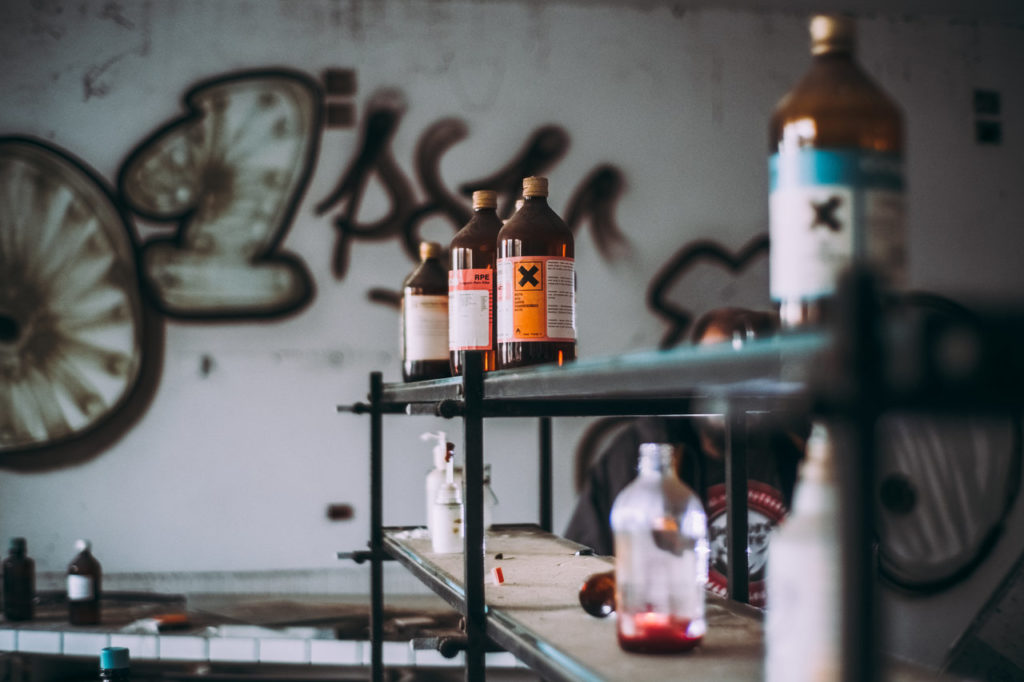“Think before you ink.” This advice is commonly handed out by old-timers to young ones super excited to get inked for the first time. And there’s good reason for this. The most common being you don’t want to end up regretting your decision. After all, tattoo removal is not as simple as you may think.
But let’s backtrack for a bit here. There’s a far more sinister reason why you should rethink getting a tattoo. It’s called tattoo ink poisoning. So, why exactly is this something to be afraid of? Well, this is what you’re going to learn in this article.
Page Contents
What is tattoo ink poisoning?

As the name suggests, ‘tattoo ink poisoning’ is someone getting poisoned by tattoo ink. This is what happens when tattoo ink is inserted into the dermis layer of the skin (as is the case with the normal tattooing process).
Tattoo ink poisoning is different from an infection. Infections usually occur when the ink is contaminated with germs and bacteria, or the tattooist wasn’t all that hygienic with his equipment and tattooing tools.
Why ink poisoning happens
The answer lies in the ingredients used to make tattoo ink. You may be surprised to know that many tattooists don’t even know what’s in their ink.
But you really can’t blame them. Why? Because many ink manufacturers don’t even bother listing what’s in their ink! An honest-to-goodness ink company will list down the pigment base and ink carrier used, but they’re far and few in between.
The unfortunate truth is that dodgy manufacturers use heavy metals in their ink, and they don’t even bother informing their end users about it. In my opinion, this practice is very irresponsible. After all, that heavy-metal-laced ink will live in the skin forever. Think about how dangerous it is.
That said, this is mainly why ink poisoning happens. If people are aware they’re going to have mercury, lead, chromium, cadmium, and other heavy metals inserted in their skin, then I’m sure they’re going to change their minds about getting tattooed at that very instant!
Why ink poisoning sometimes appear to be delayed
Tattoo ink molecules are large enough to not get broken down by the body’s immune system immediately. But over time and with frequent sun exposure, the ink particles get broken down into smaller chunks which then get absorbed into the body. When this happens, there’s a chance some particles end up getting lodged in the lymph nodes.
And here’s where it gets interesting:
Since ink particles don’t usually get broken down right away, it can take several months or years before poisoning actually occurs. So, don’t be surprised if you experience ink poisoning symptoms well after you got your tattoo!
What are the symptoms of ink poisoning from a tattoo?
Tattoo ink poisoning symptoms are most similar to tattoo ink allergies. In most cases, they’ll start off as mild symptoms. But as more toxic ink particles get absorbed into your lymph nodes and other parts of your body, then the more severe the symptoms become. The symptoms may also vary depending on the tattoo ink ingredients used. These include:
- Joint pain and body pain
- Swelling in tattooed area as well as lymph nodes
- Rashes and skin bumps
- Fever and chills
- Nausea and vomiting
- Post tattoo headache and migraines
- Delayed healing – if poisoning occurs on an unhealed tattoo
What to do if you have a reaction to tattoo ink?
If you suspect you have tattoo ink poisoning, you should talk to your GP straight away. If your symptoms are rather severe, head to the nearest hospital. You don’t want to risk your condition worsening with each passing hour.
Also, now is a good idea to contact your tattooist and ask him for information about the ink used on you (if you didn’t get the information beforehand). Details like the brand name, colour, batch number and manufacturer’s contact details may help your doctor diagnose your condition.
Your tattooist will also appreciate you cluing him in on your situation, so he and his peers don’t use the same type of ink on future clients.
How to avoid tattoo ink poisoning?
In the grand scheme of things, there’s very little chance you’re going to get tattoo ink poisoning. You’re more likely to get an infection or an allergy rather than poisoning.
An infection can be avoided by making sure the tattooist operates in a sterile environment – and by you observing proper tattoo aftercare.
To minimise the risk of allergies, you can ask your tattooist to do a patch test to check if you’re allergic to the ink.
Lastly, the only sure-fire way you can protect yourself against ink poisoning is… by not getting a tattoo in the first place. You may not like this tip, but it’s the honest truth.
Conclusion
Don’t let the remote possibility of tattoo poisoning scare you from getting inked. Unless, of course, you already have pre-existing medical conditions or known heavy metal allergies that will cause issues down the line. But if you’re healthy, go get inked and live your life to the fullest!
